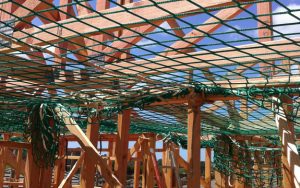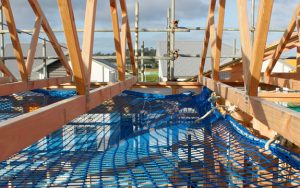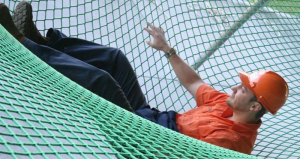Safety nets are designed to stretch and absorb the energy of a fall, so a falling person is less likely to be injured. The greater the fall height, the greater the impact; so the net’s deflection must also be greater. The safety net must be able to deform or deflect enough to absorb all of the energy when someone falls – up to the maximum fall height for the design.
However, for nets to protect workers from falls they must be set up correctly. WorkSafe inspectors have witnessed several cases where the net setup was well below what was required, thereby offering no protection to the risk of falling. The design and setup of safety nets is crucial to their ability to function, especially if they are coupled together to span large rooms.
To help raise standards, WorkSafe recently released an alert to the industry that highlighted some of the poor practices related to safety nets. This alert is available in the news section of WorkSafe’s website.
When it comes to suppliers, you must ensure that any nets and associated fitting equipment that you supply meet the appropriate standards for New Zealand.
When nets are installed on-site it should be done following the manufacturer’s guidance and industry best practice. We suggest that you ensure the correct use of anchorages, ties and foundations so that the nets will not fail if someone needs fall protection.
In addition, safety nets are not a place to store your site rubbish, or for bouncing or standing on. Unfortunately, we have seen instances of nets being used for these purposes.
While it may be tempting to unscrew the nets if you need to get things up through them, this can lead to net failure. We have seen several instances where tek screws have failed because they have been reused. Safety nets should always be reinstated by a competent person after an alteration or fall.
Working at height carries inherent risks which must be managed. Safety nets are just one solution to help minimise the impact of a fall, don’t be afraid to look at other options if they suit your requirements and site better.
Innovative solutions are popping up to help manage these risks, but always ensure that they are fit to manage the risk of any fall on site.



